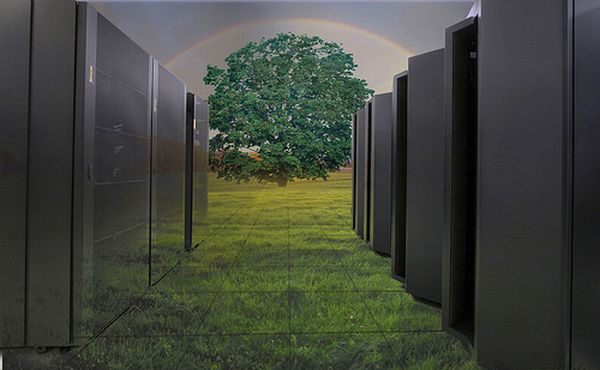I never really considered the impact that cloud computing has on the environment until I saw a TV program about it. Despite my personal and professional experience relying on and using cloud technology, the topic had not crossed my mind. Let's delve into this subject.
The adoption of cloud computing has significantly impacted the environment in recent years. Cloud computing refers to delivering computing resources, including servers, storage, databases, networking, software, analytics, and intelligence, over the Internet to offer faster innovation, flexible resources, and economies of scale. The cloud has transformed how organizations operate, communicate, and store data, making it easier and more cost-effective than ever before. However, the widespread adoption of cloud computing has also led to increased energy consumption and environmental impact.
One of the most significant environmental impacts of cloud computing is the increase in energy consumption. The data centres that power the cloud consume vast amounts of electricity to keep their servers and storage systems running 24/7. According to a report by the Natural Resources Defense Council, data centres in the United States alone consume more than 90 billion kilowatt-hours of electricity each year, which is equivalent to the annual energy consumption of 5 million average American homes. This level of energy consumption not only results in high costs for organizations but also contributes significantly to greenhouse gas emissions and climate change.
Another environmental impact of cloud computing is the production of electronic waste, or e-waste. The constant demand for new and improved technology means that organizations must frequently upgrade and replace their hardware, leading to the creation of vast amounts of e-waste. E-waste is a major environmental issue, as it contains toxic materials, such as lead and mercury, that can cause harm to the environment and human health if not disposed of properly. The rapid pace of technological innovation in the cloud computing industry means that data centres and other hardware components become obsolete quickly, resulting in an increase in e-waste.
The rise of cloud computing has also led to an increase in data centre construction, which can have a significant impact on local ecosystems. Data centres require large amounts of land, which can result in deforestation, habitat loss, and other environmental impacts. In addition, the construction of new data centres requires significant amounts of energy and resources, including concrete, steel, and water, further exacerbating the environmental impact of cloud computing.
The construction of data centres in the UK, for example, can have both positive and negative effects compared to building new homes. On the one hand, data centres can provide economic benefits, including job creation and investment in the local community. Data centres also play an important role in supporting the growth of digital industries, which are becoming increasingly important for the UK economy.
On the other hand, the construction of data centres can also have negative effects, particularly on the availability of land and resources. The large footprint of data centres can limit the availability of land for other uses, such as housing, and the construction of data centres requires significant amounts of energy, water, and other resources. This can increase pressure on local resources and potentially lead to higher costs for the local community. There are several parts of Ireland and the UK where important housing has been delayed for decades due to data centres getting priority over water and power.
A local council in Ireland, which already had 70 data centres, banned the construction of additional facilities due to the pressure it put on the local community and power supply. However, the government overruled this ban, much to the disappointment of the local council and community, who felt that the economic benefits were prioritized over the well-being of the local area. This event is becoming increasingly prevalent, with similar situations occurring more frequently.
Despite the significant environmental impact of cloud computing, there are steps organizations can take to mitigate these impacts. One approach is to use renewable energy sources, such as wind, solar, and hydropower, to power data centres. Many cloud providers are now investing in renewable energy and committing to reducing their carbon footprint. By choosing to use cloud services from providers that use renewable energy, organizations can help to reduce their environmental impact.
Another approach to mitigating the environmental impact of cloud computing is to use energy-efficient hardware and software. This includes using low-power servers, storage systems, and other components that consume less energy. In addition, organizations can use virtualization technologies to maximize the utilization of their hardware resources, reducing the need for additional hardware and minimizing the environmental impact of cloud computing.
The data centre industry is expected to grow fourfold in the next five years. Despite this, many people in my position may not be thinking about the potential impact this could have. As someone who is concerned about the future of our planet for my children, this raises the question of what can be done to ensure a more sustainable approach.

